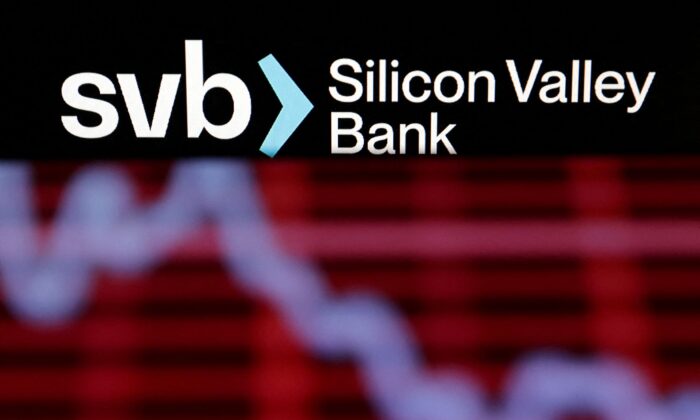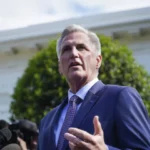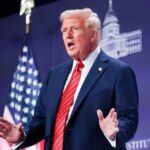By Jeffrey A. Tucker
Commentary
Elite overseers of the U.S. banking system spent the better part of the week assuring us that all is well with it. You just have to trust them. They know. And we all know how much we can trust our overlords to tell us the truth, right? Such a wonderful track record of at least three years during which time anyone with power gladly lied to us about everything that mattered. But this time, they say, they can be trusted.
There are a few anomalies. Consider Treasury Secretary Janet Yellen’s identical testimonies to the U.S. Senate and the U.S. House on March 22 and March 23 respectively. They were the same but for one sentence. In the second testimony, she left out a single sentence: “The U.S. banking system is sound.”
That’s a bit strange, don’t you think? Probably, she didn’t want it to go down in history the way that tremendously bad predictions tend to do. So as much as she wants to reassure everyone, she also doesn’t want egg all over her face in a matter of months.
Why did the Silicon Valley Bank (SVB) blow up? Oh, yes, it was the mismatch between the yields on their bond portfolio and existing yields combined with unexpected drawdowns on cash from their highly leveraged customer base. Surely that was isolated, right? Nope: The same problem has hammered many banks.
The problem is the unrealized losses on existing bank assets in light of dramatically changed bond yields. There was no way that this wasn’t knowable. David Stockman explained:
“In turn, that might have flagged SVB long, long before Jay Powell & Co. ended up scrambling through another crisis weekend that most definitely did not come out of the wild blue yonder. In fact, a first cut screen would have shown that SVB’s HTM (fixed income securities classified as held to maturity) had soared from $17 billion to $98 billion in barely a year, and that it had unrealized losses of just $800 million as of Q4 2021.
“And then in absolute and utterly predictable lockstep with the Fed’s rate raising campaign and the resulting soaring bond yields, impending trouble at the OK Corral literally screamed out from SVB’s financial statements. By July last year it was already evident that unrealized losses of $14.2 billion amounted to nearly all of the company’s book equity. And besides that, it also had $150 billion of uninsured and potentially flighty deposits.”
And so we might ask about the health of the rest of the sector. It doesn’t look much better overall. SVB came first because it faced the problem first, but the rest are dealing with something very close to similar. It’s only a matter of time.
Among which is the Fed itself, which has stopped making money for the first time in its entire history. The Wall Street Journal reported:
“Like all central banks, the Federal Reserve was designed to make money for the government from its monopoly on issuing currency. The Fed did generate profits, which it sent to the Treasury, every year from 1916 on—until last fall. In a development previously unheard of, the Federal Reserve has suffered operating losses of about $42 billion since September 2022.
“That month, the massive interest-rate risk created by the Fed’s asset-liability maturity mismatch began generating cash-operating losses, and the losses now average $7 billion a month. This is because the Fed’s trillions of dollars of long-term investments yield 2 percent but cost 4.6 percent to finance. The Fed will soon have negative equity capital, and as operating losses continue to mount, its equity-capital deficit will grow.
“While the Federal Reserve Act requires the Fed to avoid taking credit related losses that could have an impact on taxpayers, it makes no mention of losses from interest-rate risk exposures. The act’s authors never imagined such losses. Monetary policy was all but assured to generate Fed profits prior to 2008. That changed once the Fed started paying banks interest on their reserve balances and making large open market purchases of long-maturity Treasuries and mortgage-backed securities.”
So there we go: It’s the Ben Bernanke problem again. He was celebrated as a wonderful hero in 2008 for his quantitative easing. He even received the Nobel Prize for his genius! Many people, myself included, warned of an inflation that didn’t arrive. What actually happened was the most enormous distortion of production structures in the history of industry. It unleashed DEI, ESG, “woke” philosophy, and a complete switch of commercial loyalties, uniting industry and state in a single vicious cartel that oppresses the people to this day.
And now, as it turns out, this change bankrupted the banking sector and even wrecked the Federal Reserve itself, simply because the bill finally came due. The inflation eventually did arrive, and the Fed has freaked out, raising rates faster in a shorter period of time than ever on record. That has fundamentally disturbed bank balance sheets and made the entire system vulnerable to collapse.
Sorry to put it that way, but that’s where we are. Can it be fixed through Powell’s efforts to mimic Paul Volcker from the days of old? Powell might believe that, but there’s some bad news. Let’s revisit Stockman on the point:
“In dollar terms, the inflationary economy that Jay Powell is attempting to tame carries $50 trillion more of debt relative to income (GDP) than did the one Paul Volcker brought to heel in the early 1980s.
“That is to say, at the Volcker era 160 percent debt-to-GDP ratio, the outstanding total debt in 2022 would have been $42 trillion in round terms versus the actual level of $94 trillion, at the current 360 percent ratio. Likewise, a 1 percent increase in average interest rates would cause a $420 billion rise in the level of interest payments across the economy at the Volcker level compared to a $940 billion rise that would occur at today’s debt level.
“We’d bet that a $52 trillion difference in the stock of debt and a $500 billion difference in the annual flow of debt service is not merely an academic curiosity. Actually, it amounts to one humongous macro-economic elephant in the room, which totally redefines the likely impact of the Fed’s primitive anti-inflation tool.
“That is to say, the U.S. economy is now drastically more fragile than it was in 1980, meaning that raising rates will result in far more broken furniture than was the case in Volcker’s time.”
None of this considers the international issue, which only multiplies problems. Just as lockdowns were international, the banking crisis will be, too. You surely saw what happened to Deutsche Bank over the weekend.
This crisis was also made in a lab, one concocted by know-it-all elites at the expense of the people. They’re discredited, no question. Here’s an idea. Let’s upend the system that created this crisis and revisit the wisdom of the old term self-government. It seemed to work much better for all of us.






